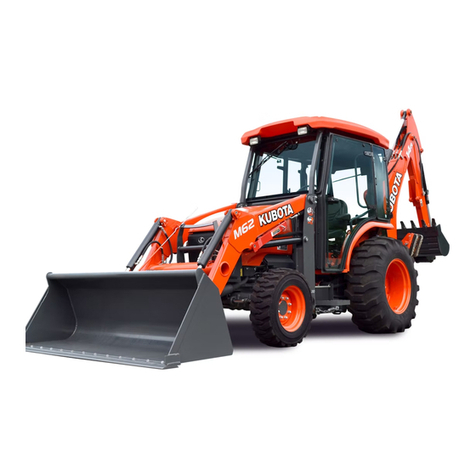
9 of 37
STEP 4: Rear Panel
Note: If installing this cab on a tractor with optional rear remote
hydraulics installed, Curtis kit 1KTLBL47HYD must be installed.
Refer to Step 1 in the installation manual for the kit before
installing the following rear panel otherwise there will be an
interference.
4.1 Remove and retain the outer most M12 nut, lock washer,
and flat washer from the upper front ROPS, just under the
canopy (see Figure 4.1). Push the end of the bolt flush
with the OEM side frame bracket, but do not remove.
Repeat for the other side.
4.2 With assistance, place the rear panel against the ROPS
per Figure 4.1 and push the M12 ROPS bolts through the
holes in the rear panel. Secure with the flat washer, lock
washer, and M12 nut removed in step 4.1. Leave loose.
4.3 Remove the bulb rubber trim on the right side of the rear
panel to expose the u-shaped slot.
4.4 Slice the supplied rubber grommet and install around the
vehicle wire harness
4.5 Install the grommet into the slot and re-install the bulb
rubber trim from step 4.3. The grommet will deform when
the rubber is re-installed.
STEP 5: Left Side Frame
5.1 Set a ROPS clamp in place on the left side ROPS tube
with the larger flange towards the rear as shown in Figure
5.1.
5.2 Disconnect the gas shock at the top of the door and
remove the door with assistance by unlatching at the front
via the outer handle button or inside lever, and lift the door
off the hinge pins. Remove the rear window by opening the
latch, squeezing the buttons to release the latch and lifting
the window off the hinge pins.
CAUTION: Be wary of the brass washer at each hinge pin.
For best results, remove the washers and set them aside
until the windows and doors are re-installed later.
Figure 4.1: Fasten Rear Panel
Figure 5.1: ROPS Clamp Set In Place
INSTALLATION
Figure 4.3: Install Grommet on Harness
Grommet
Bulb Rubber
ROPS Clamp




























